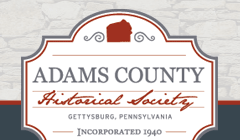Article Title
Document Type
Article
Abstract
In 1910, the town of Gettysburg was a thriving, bustling place. The Civil War was long over, and the town had begun to profit from tourists who wished to see the site of the famous battle. Business boomed. Merchants moved in and out of buildings and young families set up housekeeping in their own homes, raising their children and getting off to a running start in their chosen professions. There were cars in the streets next to the old horse-drawn buggies and electricity had begun to replace the gas lamps and candles of the Victorian era. For all that the town was growing rapidly, however, it was still subject to turn of the century problems. Tuberculosis was still widespread and killed many people every year - indeed, lung diseases in general seem to have plagued the country. Kidney disease was another concern, as were rats and other pests. On the whole, Gettysburg was a town in transition -not yet firmly in the twentieth century, but no longer a part of the nineteenth century either. [excerpt]
Recommended Citation
Hiss, Danielle C. and Gray, Megan L.
(2010)
"Mapping Gettysburg: Baltimore Street in 1910,"
Adams County History: Vol. 16, Article 5.
Available at:
https://cupola.gettysburg.edu/ach/vol16/iss1/5
